Best internet providers in 2020: How to choose cable vs. DSL vs. satellite and more
In today's world, high-speed internet service has become as vital as other utilities like water and electricity. It's the gateway for everything from news to education, dating to dining, and all manners of entertainment, from music to gaming -- and even what we used to call "TV." For most Americans, a reliable and high-speed internet connection is now a mandatory part of both work and family life.
According to the most recent data available, the US ranks 10th (see 2017 PDF report) among countries for the highest average internet speeds (at 18.7 megabits per second, or Mpbs). But to the chagrin of citizens and politicians alike, high-speed internet isn't yet universally available. Roughly 19 million Americans, or 7% of the US population, still don't have access to a broadband provider, according to the FCC. This means they aren't able to access the fastest speeds, unlimited data and other pleasures that come with top-notch high speed internet access.
And we can't even agree on the scale of the problem. A more recent survey from research firm NPD Group puts the estimate much higher: It says that 100 million Americans don't have access to 25 Mbps or faster speeds.
Read more: Life in the slow lane: Welcome to the internet in rural America
That said, the majority of Americans do have access to at least some type of high-speed service from their internet service provider (which is often the same as their cable TV and phone service provider). Most often, it's cable, internet or a digital subscriber line (commonly known as DSL) connection. If you're lucky, it's fiber, which offers the fastest speeds. If you're less fortunate, it's a satellite or fixed LTE connection. As a last resort for those in far-flung rural and remote regions, there's dial-up internet access. And now internet service providers offering 5G options are beginning to pop up. Here's how the different types of internet services rank in order of fastest internet to slowest:
Internet service types, compared
There are many variables involved in choosing an internet service provider and internet packages. And, further complicating things, those variables -- internet speeds, cost, reliability and customer service -- may vary from place to place. Further, it may be bundled with your phone and TV provider. And, even if the service provider is identical, the experience may not be: The Comcast experience in Oakland may be wholly different from that of Comcast Atlanta, just as the McDonald's in your hometown may offer a different experience to the one in mine, even though they both serve the same menu.
As such, instead of trying to recommend the best internet provider for you based on national download speeds or pricing, we're taking a different tack. We're letting WhistleOut, a comparison shopping provider, handle the heavy lifting as far as speeds and pricing for vendors in your area (see below). And we've devoted our time to mapping out the pros and cons of the technologies in question, along with some general buying advice.
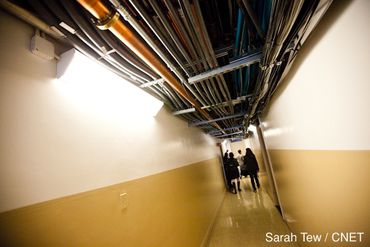
Fiber
- Typical bandwidth: download 50-1,000Mpbs
- Average service price range: $50-$100 a month
Fiber-optic cables make up the backbone of the global telecommunications system, serving as the main connective pathways for most of the world's internet, TV and telephone services. Until recently, fiber optics were used exclusively to connect cities and countries. But during the past decade or so, some providers in a few cities have begun to extend fiber optics to individual homes and businesses.
Fiber-optic internet service delivers the fastest and most reliable internet connection, with download speeds and upload speeds that can reach up to 1 gigabit per second. That's orders of magnitude faster than the typical cable or DSL connection. Unfortunately, unless you live in a major metropolitan area in the US, a fiber-optic network is probably not a viable option for you in the near term. About 25% of the US population currently has access to it.
If you do live in a place with support for fiber internet, you're in luck. Fiber-optic broadband offers everything you want in an internet connection: symmetrical speed -- which means equivalent performance whether you're downloading or uploading; reliability; robust signal strength; and super-low latency. And though the main fiber line may be split among homes or businesses, customers are unlikely to experience the kind of speed drags common to other types of shared connections during peak hours of use. Whether you're streaming video, uploading large files to the cloud or playing the newest online games, a fiber connection will deliver speedy, consistent performance with nearly imperceptible lag.
Fiber pros:
- Extremely fast download speeds, low latency, reliable service
- No data caps
- The best option for data-intensive applications like streaming video and gaming
Fiber cons:
- Requires professional installation
- Fewer providers
- Very limited availability
The big telecoms like AT&T, Comcast and Verizon continue to expand their fiber infrastructure throughout the US. And other companies are also getting into the business; Google Fiber is available to residents of Atlanta, Charlotte, Kansas City and a handful of other cities. But the great fiber rollout, which has been saddled with a variety of technical problems, is expected to inch along for years.

Cable
- Typical bandwidth: download 25-200Mpbs
- Average service price range: $50-$150 a month
Cable generally delivers faster speeds than any other type of internet service except for fiber, making it a solid option for high-bandwidth activities like streaming video and music, gaming and downloading (or uploading) big files. It's delivered on the same physical line as cable TV service -- and some providers offer discounts when you sign up for both. Though it's available throughout most of the US, the cable internet market is generally an oligopoly (at best), with two big companies dominating most states or regions, or (at worst) a monopoly, with just one licensed service provider. This can lead to high prices, lousy service and the existential anguish of supporting a company you despise.
Cable pros:
- Dedicated, standalone, always-on connection
- Faster and more reliable than DSL, satellite or dial-up internet
- Good for data-intensive applications like streaming video and online gaming
Cable cons:
- Neighborhoods share bandwidth, so heavy use by others may impede connection speeds during peak hours
- Installation fees and monthly service can be expensive
- Not available everywhere
Most cable companies charge between $50 and $150 per month for service, depending on where you live and the tier of service you choose. I pay $65 per month for Spectrum's standard cable internet service which offers speeds "starting at 100 Mpbs." In reality, I get about 45 Mbps for download speeds and 10 Mbps when uploading on Wi-Fi (and closer to 65 Mpbs and 10 Mbps when connected directly to the router). As with every type of internet service -- and every service provider -- your own mileage will vary.
On the plus side, cable internet service generally doesn't have data caps -- meaning that you can suck up as much bandwidth as you like without being subject to the overage fees that plague other types of internet service. And a tip: Given that many providers charge an additional fee to rent a combination modem/router, you may be able to save a few bucks, and possibly improve your speeds and performance, by purchasing your own router.
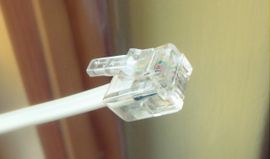
Dial-up
- Typical bandwidth: download 40-50Kbps (that's kilobytes per second)
- Average service price range: $5-$20 a month
At this point, there aren't many reasons to recommend dial-up internet access. Fewer and fewer providers offer it and it's become the option of last resort for only the most rural and remote regions. On the upside, the one prerequisite for dial-up is access to phone service -- if you have a landline phone connection, you can access the internet.
Dial-up pros:
- Inexpensive
- Runs on a telephone landline
- Multiple providers
- Widely available
Dial-up cons:
- Some plans limit the number of hours you can be online
- Extremely slow download speeds and upload speeds
- You can't use the phone and internet at the same time (unless you have multiple lines)
- Requires a landline
But -- as those of a certain age will remember from the early days of AOL, Prodigy and their dial-up contemporaries -- the connection is extremely... excruciatingly… devastatingly slow. Nowhere fast enough to do anything but load a simple webpage or send an email.
A handful of providers -- including NetZero, EarthLink, and Juno -- continue to offer dial-up access, and the biggest name in the dial-up game, AOL, offers a range of plans. The monthly price of the entry-level service is just $4.99 and offers 5 hours of connectivity. The top-tier internet plan, which costs $19.99 per month, offers unlimited access.
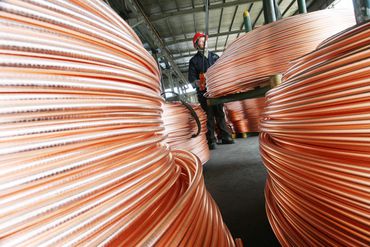
DSL
- Typical bandwidth: download 5-45Mpbs
- Average service price range: $40-$80 a month
Technically, DSL is considered broadband internet. And though DSL may be considerably faster than dial-up, it's also considerably slower than what you can expect to get from a cable connection. It's sufficient for basic productivity tasks like browsing the web and sending emails but not quick enough for data-intensive tasks like streaming video or online gaming.
DSL pros:
- Widely available
- Multiple providers
- Relatively inexpensive
- Bandwidth is dedicated, rather than shared with neighbors
DSL cons:
- Low connection speeds, especially for uploading data
- Speed and performance is dependent on proximity to your internet service provider
- Like telephone service, prone to disruption by weather
DSL is widely available, however, given that it runs on telephone infrastructure. And although it runs on landlines, the internet signal is transmitted at a higher frequency, so you can connect to the web and talk on the phone simultaneously.
Note that there are two kinds of DSL connections: symmetrical, which offers equivalent speeds for downloading and uploading data; and asymmetrical, which gives you faster download speeds -- which represents the lion's share of most peoples' internet activity -- than uploading.
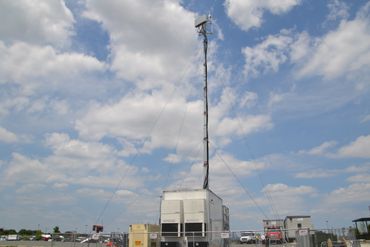
Fixed wireless LTE
- Typical bandwidth: 5-10 Mbps
- Average service price range: $50-$85 a month
Fixed LTE internet service is transmitted from the same wireless towers that enable LTE cell phone communication. More common in rural areas that don't have reliable cable internet service but are well-populated by cell towers, fixed wireless LTE service requires you to have a special antenna installed on or around your home.
Fixed wireless LTE pros:
- Provides decent broadband internet service in rural and remote regions
- Doesn't require wires or cables infrastructure connected to the home
Fixed wireless LTE cons:
- Requires professional antenna installation and setup
- Physical and geographic obstructions may mitigate speed
- May be expensive and/or require a multi-year service contract
- Often subject to data caps and/or high overage fees
- Higher latency times than faster-wired service like cable and fiber
Eventually, the next generation of wireless internet, 5G, will come to some fixed wireless networks. (More on that below.) But 5G and fixed wireless are not synonymous. Not all fixed wireless networks support 5G. And not every 5G network is necessarily a fixed wireless one.
At the moment, fixed LTE can be one of the most expensive types of internet service because it usually comes with caps on the amount of data you can download each month; extra charges will follow if you exceed your allowance. For example, one of AT&T's fixed LTE service plans costs $50 a month for 215GB of data -- plus an extra $10 for each additional 50GB increment. Likewise, the monthly price for Verizon's entry-level internet plan is $80 a month (including a $10 monthly access fee) for 8GB of data plus $15 for every additional 1GB of data.
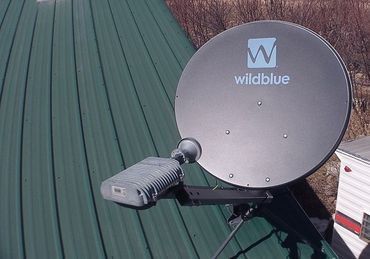
Satellite
- Typical bandwidth: download 10-30 Mbps
- Average service price range: $50-$150 a month
How about an internet connection beamed from space? Satellite internet service is just what it sounds like: a dish positioned on or around your home sends and receives signals from a service provider's hub via a satellite orbiting the earth. Most satellite internet providers, such as Viasat or HughesNet, rely on a handful of large satellites in geostationary orbit located roughly 22,000 miles above Earth.
Satellite pros:
- Widely available, even in rural and remote locations
- Multiple providers usually results in competitive pricing
Satellite cons:
- Requires the installation of a satellite dish on or around your home
- May be expensive and/or require a multi-year service contract
- Data caps can result in expensive overage fees or slower speeds
- Laggy and prone to disruption
Though a satellite internet connection is usually faster than a dial-up one, it's not always robust enough for modern applications. Latency can be a serious issue, and streaming video and gaming may be impossible when data is beamed out to space and back over and over.
It's worth noting that Elon Musk's company, SpaceX, is currently building and launching a new network of 12,000 satellites to deliver commercial satellite internet access. But it's probably too early to hold out until it's finished; Musk doesn't expect the service to be up and running until sometime around the middle of the next decade.
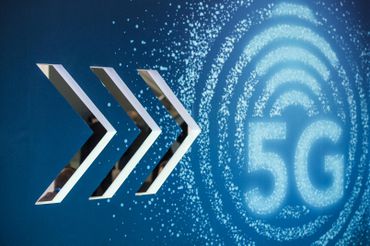
New but not yet widely available: 5G
- Typical bandwidth: 250-4,000Mpbs
- Average service price range: To be determined
The next generation of cellular technology -- the fifth generation, hence 5G -- promises to usher in a new era of internet access, first on mobile phones and then in the home, with dramatic improvements in network speed, coverage, and responsiveness. CNET has already tested early 5G speeds in multiple cities around the world, from Los Angeles to Seoul. And though it's currently far from perfect, its potential is clear and may well be worth the wait.
For example: Verizon's network, in some areas, has shown speeds exceeding 1 gigabit per second -- that's 10 to 100 times speedier than your typical cellular connection. That's even faster than the speed delivered by a physical fiber-optic connection to your house. And it's not just the speed: 5G networks have extremely low latency -- so there's virtually no pause between when you click the link and when the website or video loads. Sounds good, eh?
5G pros:
- High speeds, low latency
- Dedicated bandwidth (no sharing with neighbors), no data caps
- Great for data-intensive applications like streaming video and gaming
5G cons:
- Nationwide rollout ongoing
- Untested technology
- Questionable signal strength
As with the earlier generations of broadband, however, it will take years for 5G to replace 4G. The new network will come first to the next generation of high-end phones. In the future, carriers will extend the broadband offering to home and business internet users. But first, installers will have to deploy special high-speed broadband equipment that can pick up the 5G signals and turn that into a Wi-Fi connection in the home or business so your other multiple devices can access the high speed. (Note that 5G and fixed wireless are not synonymous. Not all fixed wireless networks support 5G. And not every 5G network is necessarily a fixed wireless one.)
Verizon's 5G broadband service will cost $50 for wireless subscribers, and $70 for everyone else -- more or less in line with other broadband services. (You can find out if you're eligible for its broadband here.) AT&T's mobile 5G service will be free for "select" customers for the first 90 days. After that, the company will charge $499 for special 5G wifi hotspots -- plus $70 per month for a broadband plan with a 15GB data cap.
For now, the rollout continues.
Tips for selecting an internet service provider
- Consult your neighbors: Ask which service and providers other people in your area are using (and avoiding).
- When possible, buy your own modem/router: Many providers charge an additional fee to rent a combination modem/router and you may be able to save a few bucks (and possibly improve your speed and performance) with a newer, better router that you own.
- Watch out for price spikes after "special offers" expire: Many providers offer introductory monthly pricing for the first 12 months; the price you'll pay after that is the real price of your service.
- Watch out for data caps: Exceeding your plan's monthly data download threshold can result in pricey overage fees.
- Haggle your way to a lower bill: If there are multiple providers in your area, you may be able to use an alternative provider's offer to lower the price of your current monthly service.
- Consider cutting the cord for additional savings: Check out CNET's list of best live TV streaming services.
Other things to consider when it comes to internet service
The slowest part of your home network system -- including the modem, the router, the device you're using (e.g. set-top box, laptop, phone) and your service provider -- will ultimately dictate the speed and strength of your connection. A superfast router won't help a laptop with ancient networking hardware, and sluggish internet service will hinder all of your activities online -- from streaming services like Netflix and Spotify to browsing the web to sending emails.
In addition to whichever type of service you choose, there are a bunch of other factors dictating the quality and speed of your internet connection. As such, when a company advertises "speeds starting at X Mbps," that doesn't necessarily mean that you'll consistently get that speed.
Your neighbors' Wi-Fi, older devices, walls, floors, and even your microwave can affect your Wi-Fi signal. Most internet service providers offer a modem/router combo that you can rent, but you can also purchase your own router, add an extender if you need additional coverage, or try a whole-home mesh Wi-Fi system. Even if you don't know anything about networking, you can adjust some settings to improve performance when you run into trouble.
Originally published in 2019 and updated periodically.
Correction, July 30: Corrects the use of megabits per second (Mbps), clarifies the nature of shared fiber-optic cables.
You should read it
- How to save on your monthly internet bill
- Basically about Wireless Networking
- How to secure the D-Link wireless router
- AT&T ups mobile hotspot data on unlimited plans, waives activation fees
- 7 best 802.11g wireless broadband routers
- How to Set up a Wireless Network in Puppy Linux
- Here's everything you need to know about that merger of T-Mobile and Sprint
- SIM swap fraud: What it is, why you should care and how to prevent it
May be interested
- APG cable has not been repaired yet, the sea cable IA has been maintained, causing the Vietnam Internet to be affected internationally
 according to the latest information from the partners, it is expected that on april 11, 2019, the incident on the s1.9 branch in malaysia will be completed by the asia pacific gateway - apg.
according to the latest information from the partners, it is expected that on april 11, 2019, the incident on the s1.9 branch in malaysia will be completed by the asia pacific gateway - apg. - Starlink satellite internet expands globally with new package priced at $200/month
 spacex recently announced the start of a trial offering of global roaming service to users in places where starlink has not been deployed.
spacex recently announced the start of a trial offering of global roaming service to users in places where starlink has not been deployed. - These are the types of printer cables needed to connect to the computer
 if the printer does not turn on wi-fi, you need to connect them using a cable. maybe your printer is second-hand and it doesn't have a cable or you may have lost it and don't know which cable your printer needs. so this article will introduce you to the most common cables used to connect printers to computers. please choose the most suitable printer connection cable.
if the printer does not turn on wi-fi, you need to connect them using a cable. maybe your printer is second-hand and it doesn't have a cable or you may have lost it and don't know which cable your printer needs. so this article will introduce you to the most common cables used to connect printers to computers. please choose the most suitable printer connection cable. - APG fiber optic cable has been repaired, Internet capacity goes to international recovery 100%
 the shift of the apg submarine cable route in singapore has been completed faster than expected, the quality of international internet access in vietnam has been restored 100%.
the shift of the apg submarine cable route in singapore has been completed faster than expected, the quality of international internet access in vietnam has been restored 100%. - Repairing AAG optical cable, Vietnam Internet quality is affected internationally
 under the old plan, the aag submarine cable will be fully restored on january 20, 2018 but according to the new announcement of vnpt, from 21-21 / 2018 international partners will reconfigure the source. for the entire s1 branch to fix errors on this cable line, the internet quality from hcm city is affected.
under the old plan, the aag submarine cable will be fully restored on january 20, 2018 but according to the new announcement of vnpt, from 21-21 / 2018 international partners will reconfigure the source. for the entire s1 branch to fix errors on this cable line, the internet quality from hcm city is affected. - The Vietnam Internet will go international on AAG submarine cable to be restored on 9/11
 the breakdown of the s1h branch connecting to the internet from vietnam to hong kong on the aag sea cable has been repaired since september 5 and is expected to be completed on september 11th. .
the breakdown of the s1h branch connecting to the internet from vietnam to hong kong on the aag sea cable has been repaired since september 5 and is expected to be completed on september 11th. . - Elon Musk launches Starlink satellite Internet service in Indonesia
 on may 19, elon musk and indonesian health minister budi gunadi sadikin launched spacex's satellite internet service at a community health center in denpasar city, capital of bali province.
on may 19, elon musk and indonesian health minister budi gunadi sadikin launched spacex's satellite internet service at a community health center in denpasar city, capital of bali province. - Elon Musk's satellite Internet device was hacked with a homemade device for $ 25
 with just a $25 homemade device, lennert wouters, a security researcher at ku leuven university in belgium, was able to hack the starlink satellite internet system and access locked security features.
with just a $25 homemade device, lennert wouters, a security researcher at ku leuven university in belgium, was able to hack the starlink satellite internet system and access locked security features. - 10 best combo cable modem / router today
 finally, with today's advanced technology, users can take advantage of high-speed internet service providers, along with high-performance wi-fi through 2-in-1 devices: cable modem router.
finally, with today's advanced technology, users can take advantage of high-speed internet service providers, along with high-performance wi-fi through 2-in-1 devices: cable modem router. - The recovery of AAG cables must last until October 3
 the internet user community in vietnam is eager to welcome the good news that aag submarine cable will be sold out on september 30, 2014, until today (september 28), there is information until the morning. 3/10 can recover aag cable breakdown.
the internet user community in vietnam is eager to welcome the good news that aag submarine cable will be sold out on september 30, 2014, until today (september 28), there is information until the morning. 3/10 can recover aag cable breakdown.










 How to Add a Pinterest Tab to Your Facebook Fan Page
How to Add a Pinterest Tab to Your Facebook Fan Page How to Convert a Doc File to a Docx File
How to Convert a Doc File to a Docx File Netizens are crazy about Google virtual pet games: Lying at home with tigers, leopards and 'baby Na' is easy
Netizens are crazy about Google virtual pet games: Lying at home with tigers, leopards and 'baby Na' is easy How to Deal when Your Best Friend Is Gay
How to Deal when Your Best Friend Is Gay How to Speak the Igbo Language
How to Speak the Igbo Language How to Find a Job in Canada
How to Find a Job in Canada